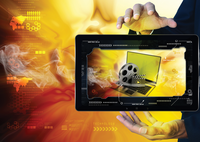Outstanding!
The Krita graphics editor is gradually turning into a digital painting tool for painters and illustrators. Krita 3.0 now expands its palette of functions with an animation tool.
|

Brijith Vijayan, 123RF.com
The Krita graphics editor is gradually turning into a digital painting tool for painters and illustrators. Krita 3.0 now expands its palette of functions with an animation tool.
Krita [1] was originally developed as a universal image editor for Linux and came as part of the Calligra [2] office suite. Over the course of time, the developers concentrated more and more on the painting and illustrator functions in the application. As a result, Krita has begun to target mostly comic book illustrators and illustrators in general rather than photographers.
The release of Krita 3.0 at the end of May marked the beginning of an another important chapter in the application's history. This release comes with an animation function, as well as an improved layer dock. In addition, the grid tool and the alignment function have been redone. This has opened Krita up to a wider circle of creatives including cartoonists and game developers.
Krita 3.0 contains a multitude of smaller and larger improvements. In order to quicken the pace of work on the project, the developers sought funding through a Kickstarter campaign [3] (see also the "Krita 2016 Kickstarter" box). The team set two goals for itself. The first was to reduce the compute time for drawing operations, thereby accelerating the rate of display. The second goal was to address the wish list of the crowd-funding supporters and create animations. The developers achieved both goals and then went even further and created other improvements.
[...]
Pages: 6
Following the release of KOffice 2.1, developers of the free office suite met last weekend in Norway's Oslo. Among them were the five strong team from Krita.
With the right tool and a bit of artistic talent, you can create two-dimensional cartoons, even without Flash. In this article, we present four animation programs and look at how well they perform in practice.
Bring your videos into the limelight and turn your recordings into minor works of art with the OpenShot editing tool.
GDevelop, Godot, and jMonkeyEngine simplify game programming with pertinent libraries, game engines, and developer tools. They make it possible for both beginners and advanced programmers to create nifty games with minimal effort.
A correct choice in an editing program can save you a lot of headaches when working with video clips. We compare several applications to help you choose the tool that's right for you.
© 2026 Linux New Media USA, LLC – Legal Notice